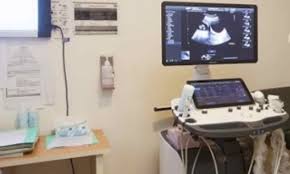In the realm of liver health, early detection of fatty liver disease holds paramount importance. Experts emphasize the pivotal role of ultrasound technology in achieving this early detection, thereby preventing potential complications. Let’s delve into the significance of ultrasound in identifying and managing fatty liver disease.
Understanding Fatty Liver Disease
Fatty liver disease, also known as hepatic steatosis, occurs when fat accumulates in the liver cells. This condition can be categorized into two main types: non-alcoholic fatty liver disease (NAFLD) and alcoholic fatty liver disease (AFLD). NAFLD is commonly associated with obesity, insulin resistance, and metabolic syndrome, while AFLD is caused by excessive alcohol consumption.
1. Silent Epidemic
Fatty liver disease often progresses silently, with individuals unaware of the condition until it reaches advanced stages. Early detection is crucial for implementing lifestyle changes and medical interventions to prevent liver damage and associated complications.
2. Role of Ultrasound
Ultrasound imaging plays a pivotal role in the early detection of fatty liver disease. It is a non-invasive and cost-effective imaging modality that allows healthcare providers to visualize the liver and assess the presence of fat deposits. Ultrasound can detect even small amounts of fat in the liver, enabling timely intervention and management.
3. Diagnostic Accuracy
Experts laud the diagnostic accuracy of ultrasound in detecting fatty liver disease, particularly in its early stages. By providing real-time images of the liver, ultrasound helps healthcare providers evaluate liver texture, size, and the presence of abnormalities indicative of fatty infiltration.
4. Screening Recommendations
Given its effectiveness in early detection, experts recommend ultrasound screening for individuals at risk of fatty liver disease. This includes individuals with obesity, type 2 diabetes, metabolic syndrome, and those with a history of excessive alcohol consumption. Early identification allows for proactive management strategies to mitigate disease progression.
5. Importance of Early Intervention
Early detection of fatty liver disease enables healthcare providers to implement lifestyle modifications and interventions aimed at reducing liver fat accumulation and preventing disease progression. Lifestyle changes such as weight loss, dietary modifications, regular exercise, and abstaining from alcohol can significantly improve liver health and reduce the risk of complications.
In conclusion, ultrasound imaging serves as a crucial tool for the early detection of fatty liver disease. Its non-invasive nature, diagnostic accuracy, and ability to detect subtle changes make it indispensable in the management of liver health. By identifying fatty liver disease in its early stages, healthcare providers can initiate timely interventions and empower individuals to take proactive steps towards liver health.








